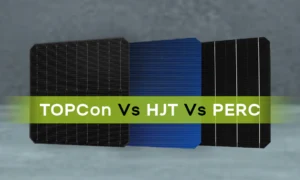HPC and edge computing are two formidable and highly valuable technological capabilities HPC and edge computing are two formidable and highly valuable technological capabilities.
As these two paradigms go on developing separately, though at a high rate, a rather interesting idea appears to combine and integrate them. Through the careful incorporation of HPC and edge servers working in harmony in today’s IT ecosystem, organizations are well positioned to realize new, predictive values, enhance the creation of new products and services, increase efficiency, reduce expenditures, and spur the creation of new markets.
This blog covers 12 intriguing examples of how HPC and edge computing should be integrated in order to speed up information analysis and obtain insights.
1. Simulating Physical Worlds Digitally
Digital twins define mirror copies of physical spaces, objects, and activities. HPC provides the huge amount of computational resources required to perform very large and detailed simulations of everything from factories to expansive IoT sensor networks. Edge elements receive and analyze native data from the physical twin in real-time and feed information back to the system that runs the digital twin simulation.
The converged infrastructure is capable of mapping the real and simulated world in a dynamic manner, enhancing possibilities like predictive maintenance, performance optimization and a lot more.
2. Delivering AI Inferencing Responsively
Whereas HPC clusters train deep AI models, edge hosts use inferencing engines that decide on the input data based on the models held in their memory. It paves way for enabling organisations to harness the capability of deep neural networks to solve complex problems while dealing with the real-time, low-latency and data compliance issues that are unavoidable in modern-day scenarios.
3. Real-Time Crash Data Collection Facilitates Investigation
Automotive safety researchers use edge servers to virtually analyse crash simulations by inputting design models. During actual impact situations, edge computers on the vehicle gather the sensor and telemetry data. Thus, instead of waiting months to receive and integrate this field data into one place, the HPC system is capable of receiving this data from vehicle edge nodes in near real-time, utilizing 5G.
4. Optimizing Autonomous Fleet Operations
The humongous data generated from various sensors mounted on self-driven cars is transferred to HPC systems to train the machine learning models on a large scale. They are then updated and deployed to the various edge nodes across the autonomous vehicle fleet.
Furthermore, HPC systems process data generated from the vehicles to manage the fleet effectively through charging, routing, and customer satisfaction. This two-way, closed-loop integration between HPC and edge computing is beneficial for the promotion of self-driving transport applications.
5. Personalizing Retail Experiences
The physical stores are equipped with edge that run AI models that do real-time analysis of videos capturing shoppers and their responses, gender, age and sentiments, among others. Rather than developing or modernizing these models locally, retail edge nodes are tied with the assistance of edge server support in the cloud or datacenter. The accuracy there is higher because of the much larger datasets, better computers, and better data scientists.
6. It Grows Even Hotter with Smart HVACS
Industrial HVAC manufacturers have developed smart controllers to enable commercial facilities to maintain proper heating and cooling systems. These edge appliances link real-world environmental sensors to edge servers in the cloud. There, they use historical usage data, weather data, current utility tariffs, and others to fine-tune the building’s settings as to the level of individual rooms.
7. Securing Sensitive Data Streams
Any organization that captures privacy-sensitive streams of video footage, medical images, or other data from edge capture points must protect the captured data. Thus, object recognition AI models can be effective when it comes to surveillance or data analysis, yet legal issues may arise with its sharing. To avoid sending sensitive data to the cloud and to promote privacy, the trained versions of these AI models can be hosted directly on these edge nodes for inference.
8. Boosting Digital Twins
The usefulness of digital twins increases more when they get connected in real-time with actual physical settings. For example, an oil company controls an offshore drilling platform digital twin using HPC systems on the land. It does this by continuously feeding on new data from the physical platform’s sensors as well as feedback from onboard edge systems.
9. Preempting Manufacturing Defects
Sensors deployed across factory equipment gather substantial data across the fabrication process, which is stored locally in edge gateways. Instead of being analyzed in silos, this goes to the central HPC infrastructure that runs process simulations.
10. Boosting Climate Science Insights
Monitoring and simulating climate change processes require integrating vast environmental sensor data from around the globe with parallel-computing simulations. Combining edge systems for data harvesting and processing with high-performance analytics helps understand dynamic weather systems.
Computers can still achieve massive scale, while researchers get finer-grained views of specific locations. Likewise, governments and insurers can allow for better anticipation and mitigation of occurrences such as hurricanes and fires by integrating multiple data acquisition and calculation methods.
11. Securing Smart Communities
Public security agencies use centralized high-performance architecture to analyze several sources and gain patterns that enhance the safety of integrated cities. By carefully integrating this high-level analysis with video streams, sensor data, vehicle telemetry and other information residing in distributed edge nodes, one can build more precise models, quickly assemble a threat response coordination team and effectively assign resources to the right place.
12. Sharpening Research Outcomes
Researchers fail to process colossal amounts of research data stored locally in instruments, storage, and specific formats that hamper scientific analysis. Through the integration of these research data pools at the edges using middleware and networks into centralized HPC facilities, investigation hurdles disappear. Now, with large computational models, AI and simulations, comprehensive combinations of data that were previously impractical are scientifically analyzed on a regular basis. There are also coincidences that emerge, thus catalyzing progress and innovation.
Conclusion
The convergence of HPC and edge computing as two relatively singular paths gives rise to the multiplication of points of connection where both sides benefit. Composable HPC and edge capabilities surpass the sum of their technical parts, enhancing virtual reality experiences, improving business processes, and exploring patterns that two individual technologies cannot detect in data.






